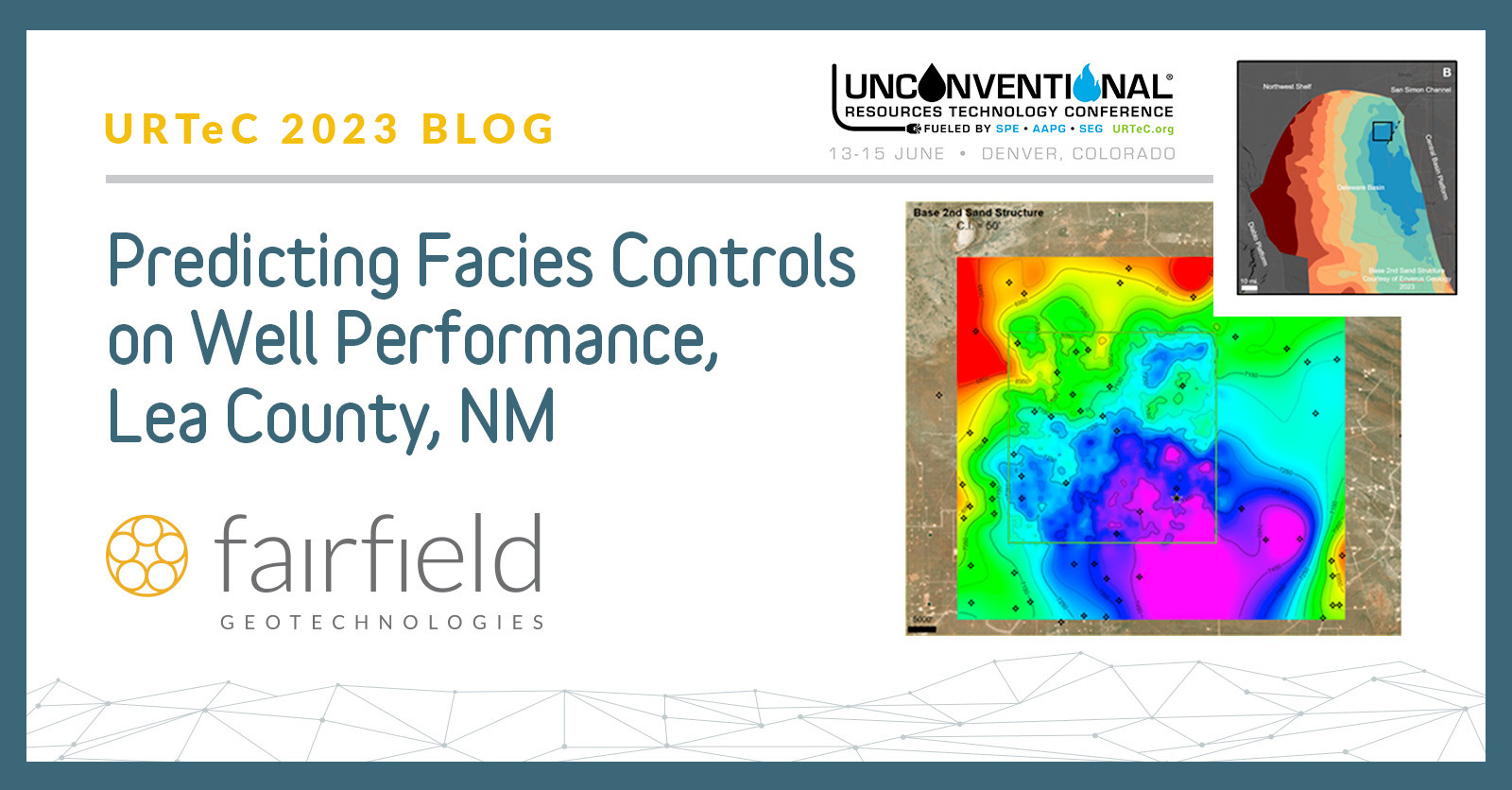A New Approach to Predicting Facies Controls on Well Performance

To assess the remaining drilling locations in the Bone Spring Formation of the Delaware Basin, Fairfield Geotechnologies created a predictive tool that analyzes geological and geophysical data. The goal was to predict BOE and water production using wireline logs and rock properties derived from 3D seismic data.
The most significant variables for predicting hydrocarbon and water production are Phi-H, sonic, impedance, temperature, total water saturation, and clay volume. Fairfield Geotechnologies' new approach is applicable to forecasts, lookbacks, and scenario evaluations to identify the optimal mix of properties for well performance.
Quantifying the Local Impact of Facies on Well Performance
The Delaware Basin has heterogeneous reservoir targets in Wolfcamp and Bone Spring Formation intervals, with sedimentation patterns driven by allocyclic features (eustatic sea-level fluctuations) and autocyclic features (carbonate debris flows). Bone Spring Formations lithofacies include quiescent bottom water settings, such as limestones, shales, mudstones, and high-energy debrites and sandstones. Detailed Bone Spring sedimentary patterns in deep portions of the Delaware basin are not well documented: Recent studies focus on drilling and completion techniques, with less emphasis on geological variables. Multivariate analysis of petrophysical summations compared to production trends and 3D seismic facies can help understand the impact of vertical and lateral geologic variability.
The approach creates a predictive analysis tool for quantifying the local impact of seismic facies and property variation on well performance, usable for forecasts, lookbacks, and scenario evaluations. The first 12-month BOE is most impacted by geologic variables related to lithology, pore volume, and temperature, while the first 12-month water production is most impacted by variables related to lithology and facies. Storage capacity (Phi-H) is common to all four models and tied to the geological conditions under which Bone Spring Formation sands were deposited.
The model, when output as predictive maps, enables what-if questions and serves as a launching point to evaluate different scenarios. For example, seismic data adds important inter-well control, and a geologically calibrated multivariate model benefits from the inclusion of both well performance and seismic data, which offer similar insights but at different scales.
Areas without seismic data can use log-based insights enhanced by the integration of seismic data. Poorly drilled areas with available seismic data can benefit from the insights from this study to guide well performance predictions on key criteria, including the first 12-month BOE and water production. This approach allows for direct, quantitative comparisons between geologic, geophysical, and completion parameters to determine their relative impacts on productivity.
We would like to thank Enverus and GeoIntegra Consulting for their assistance in completing this study.
For More Information
Read the full paper to learn more about the study. Contact Andrew Lewis by email at alewis@fairfieldgeo.com or by phone at 1-281-275-7841 for more information.
Technical Paper
Author
Michael Maler, Jason Eleson, Andrew Lewis